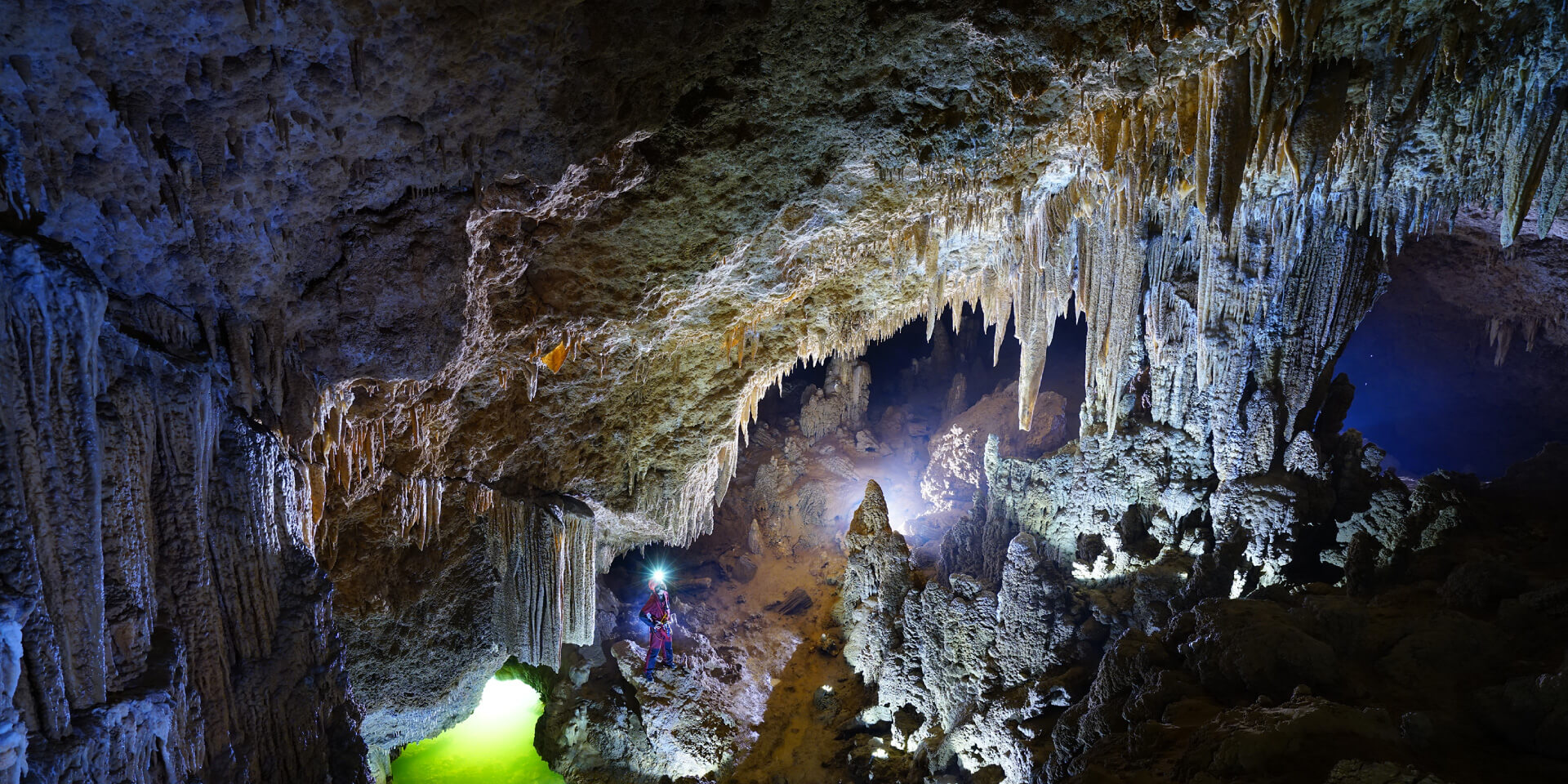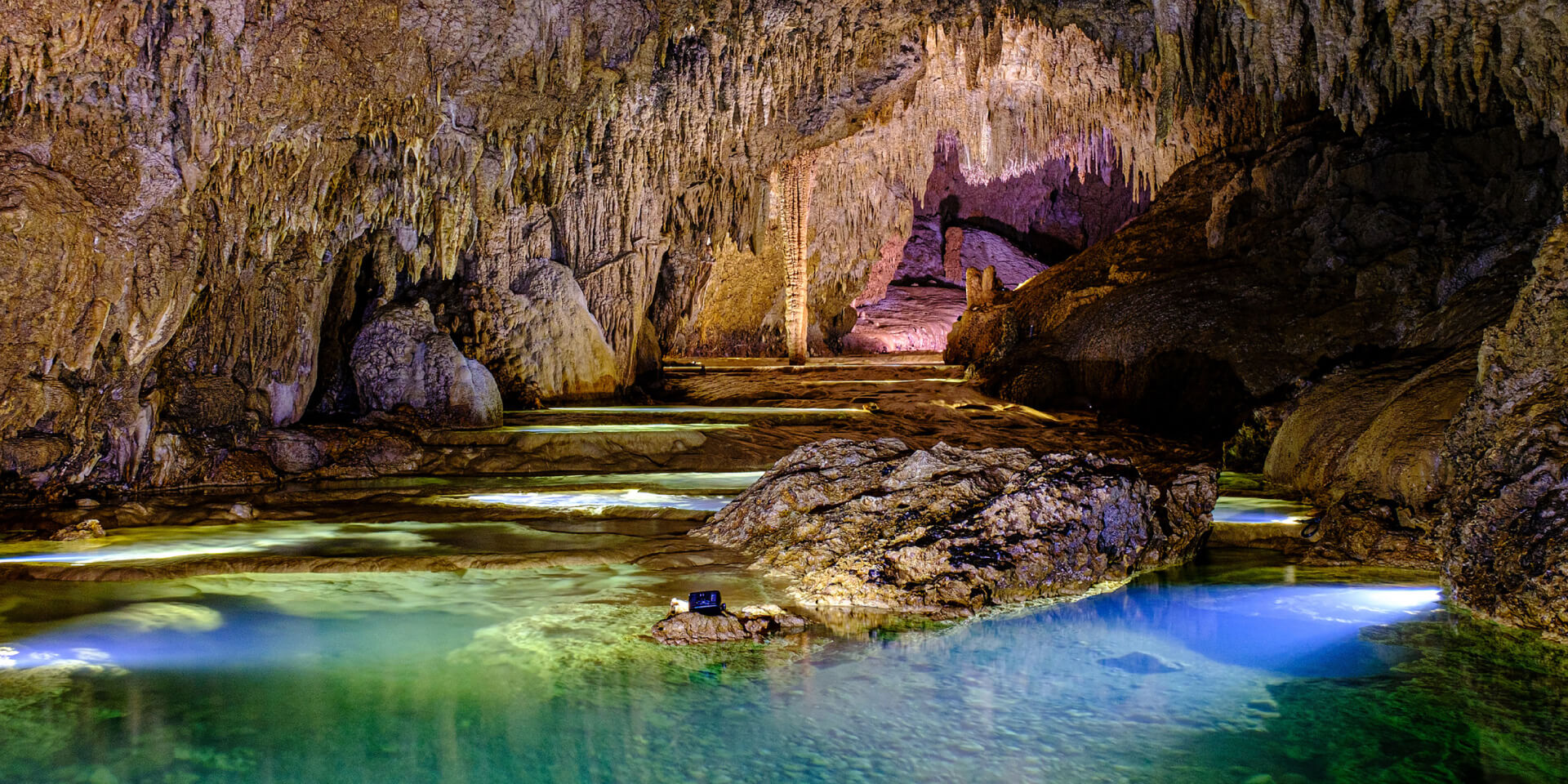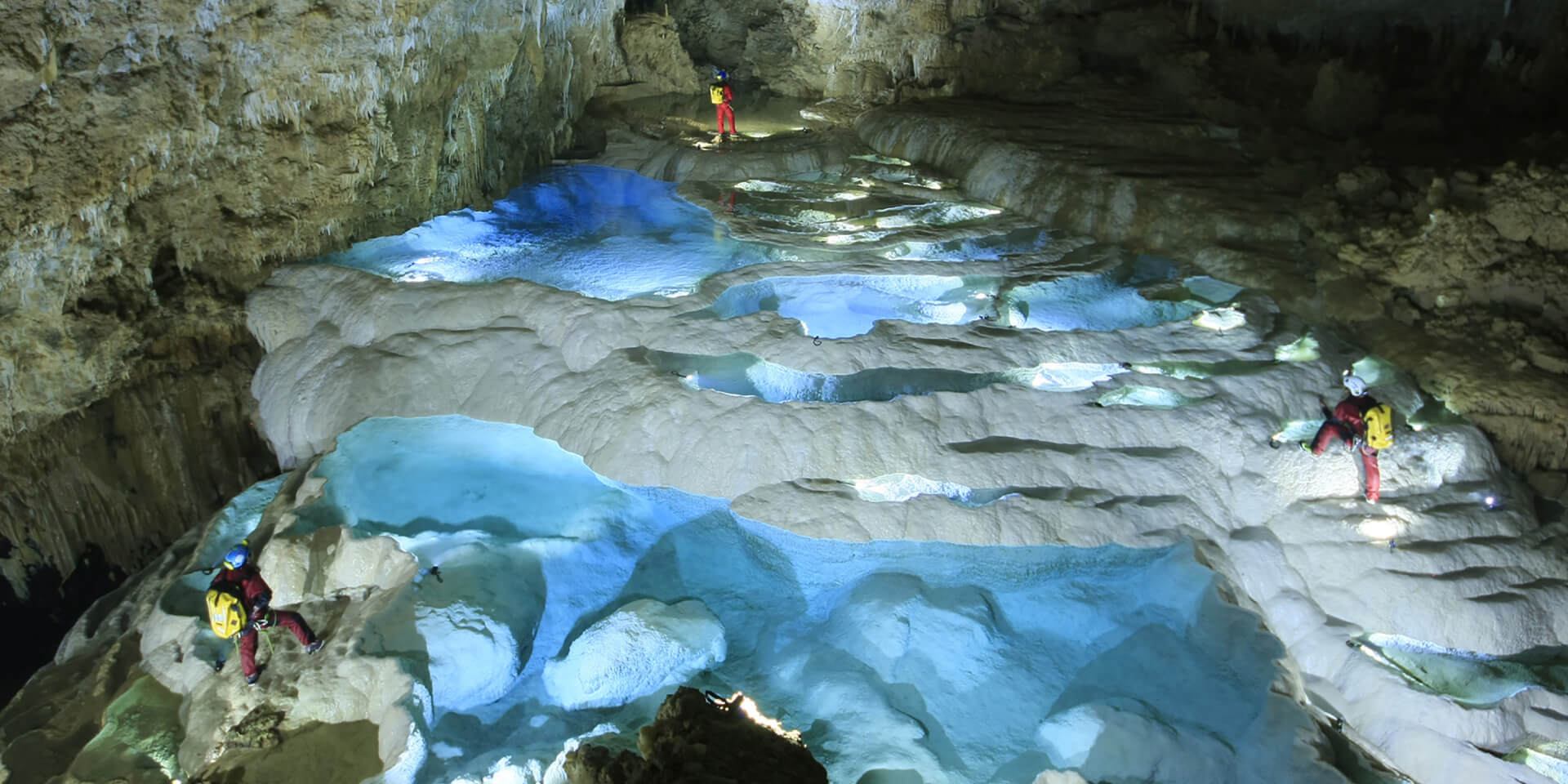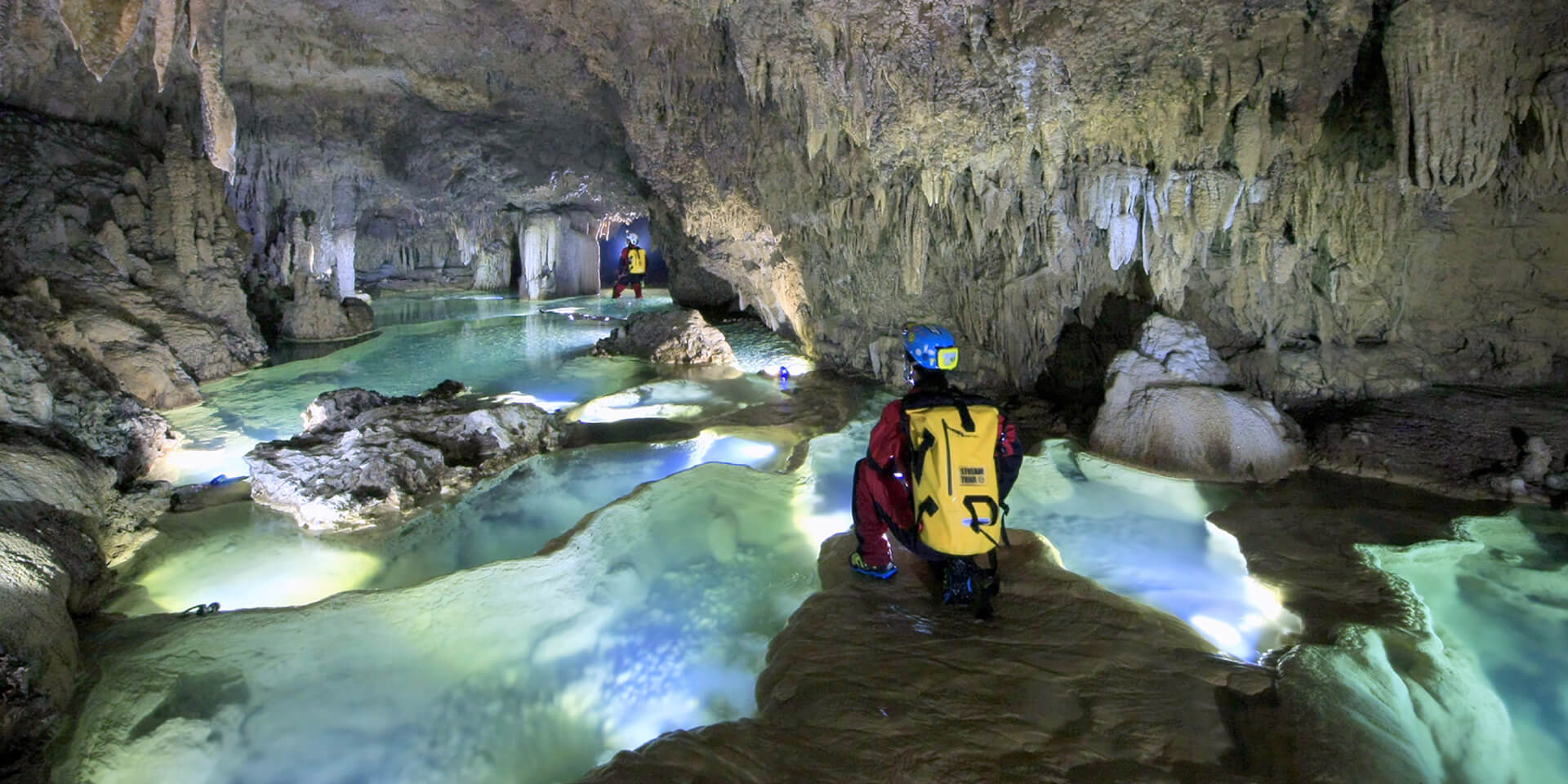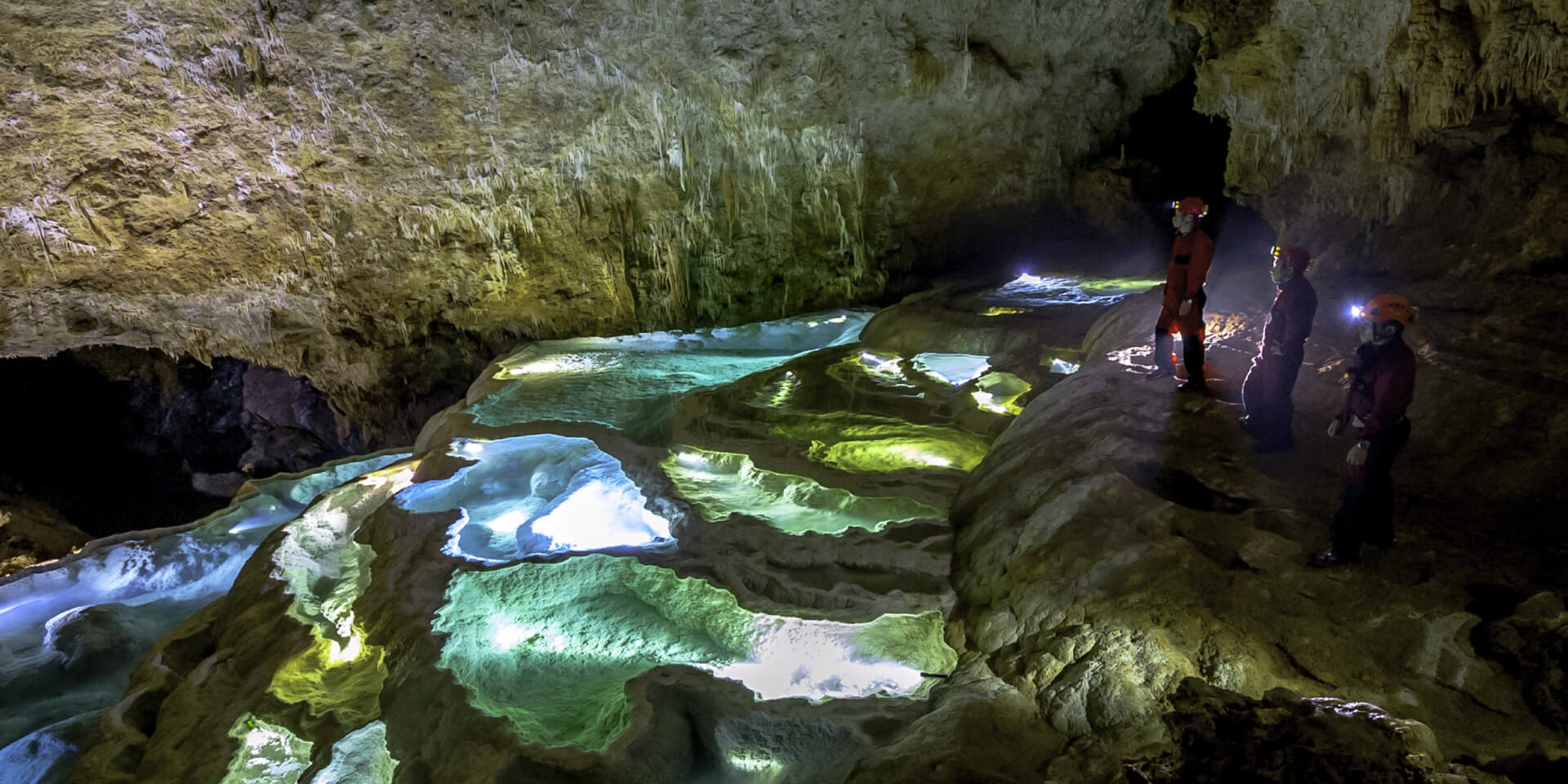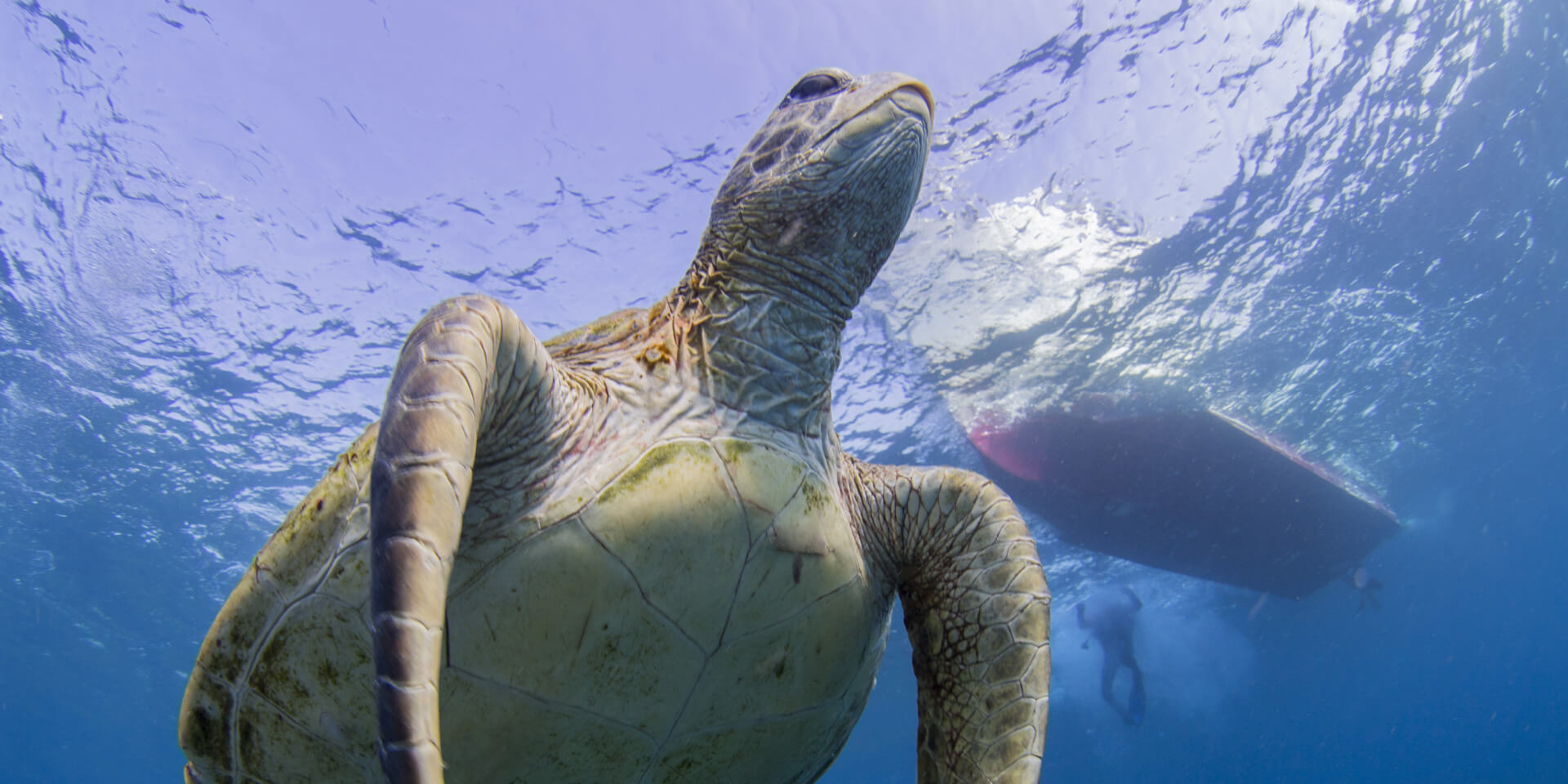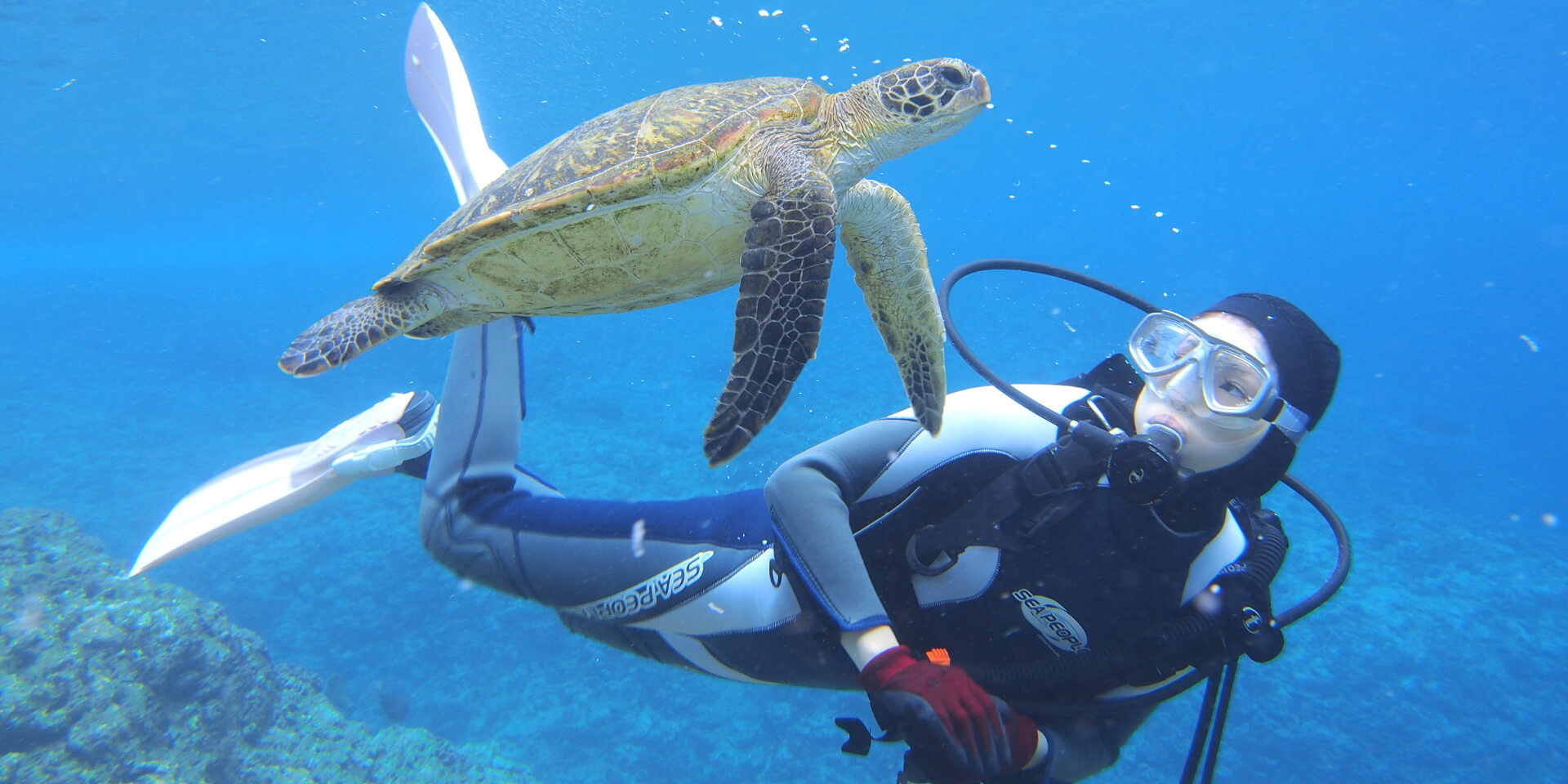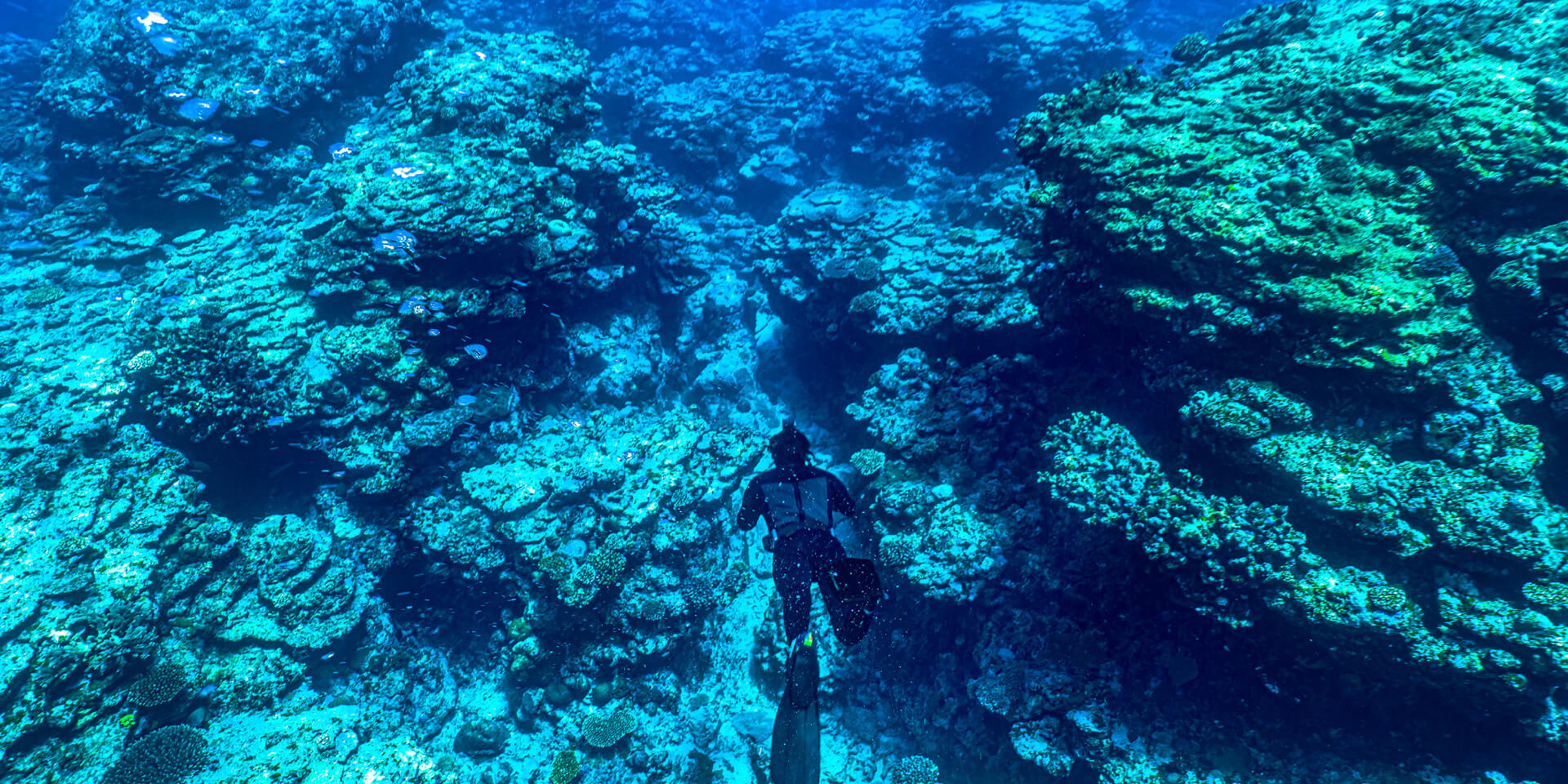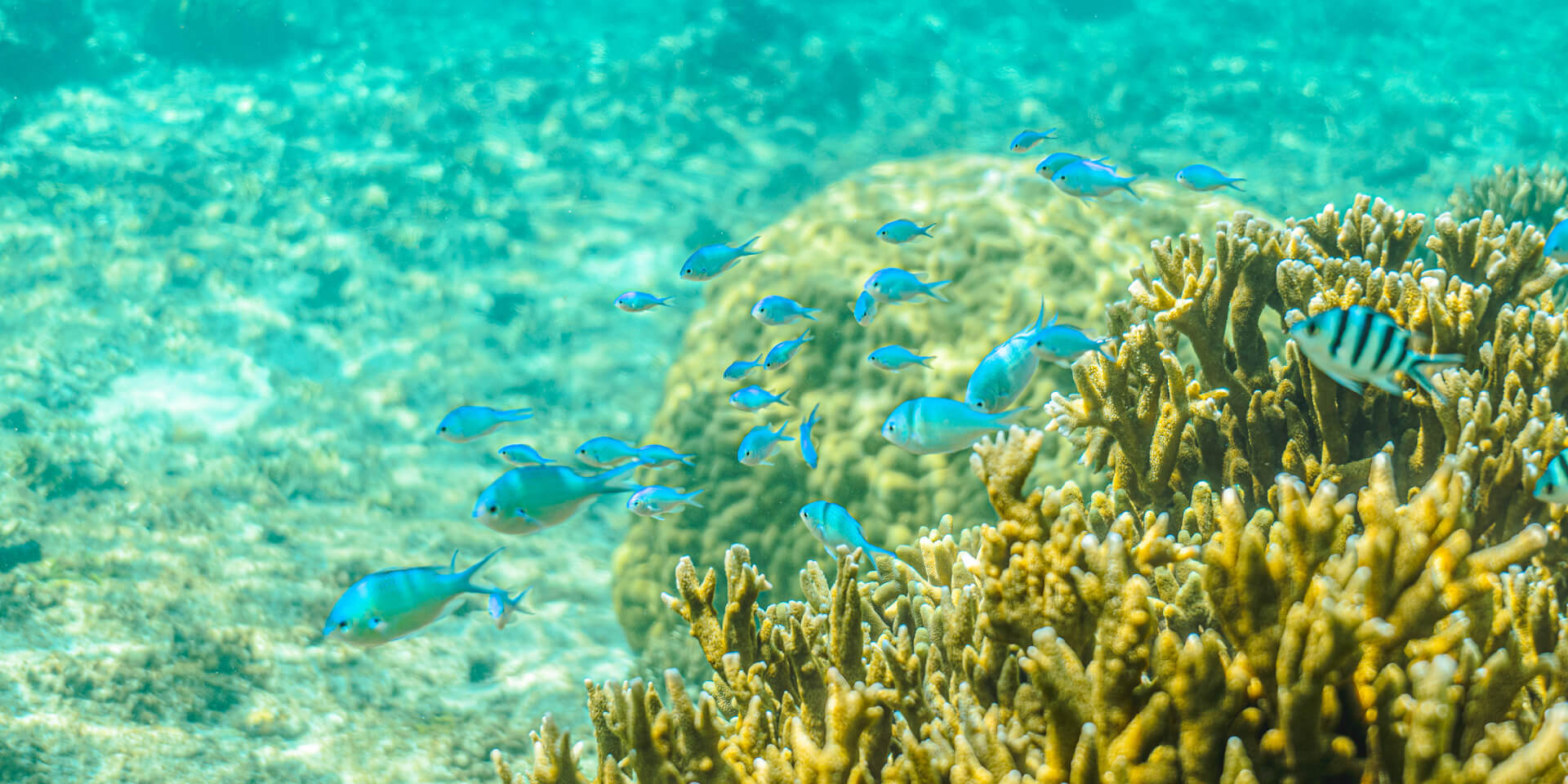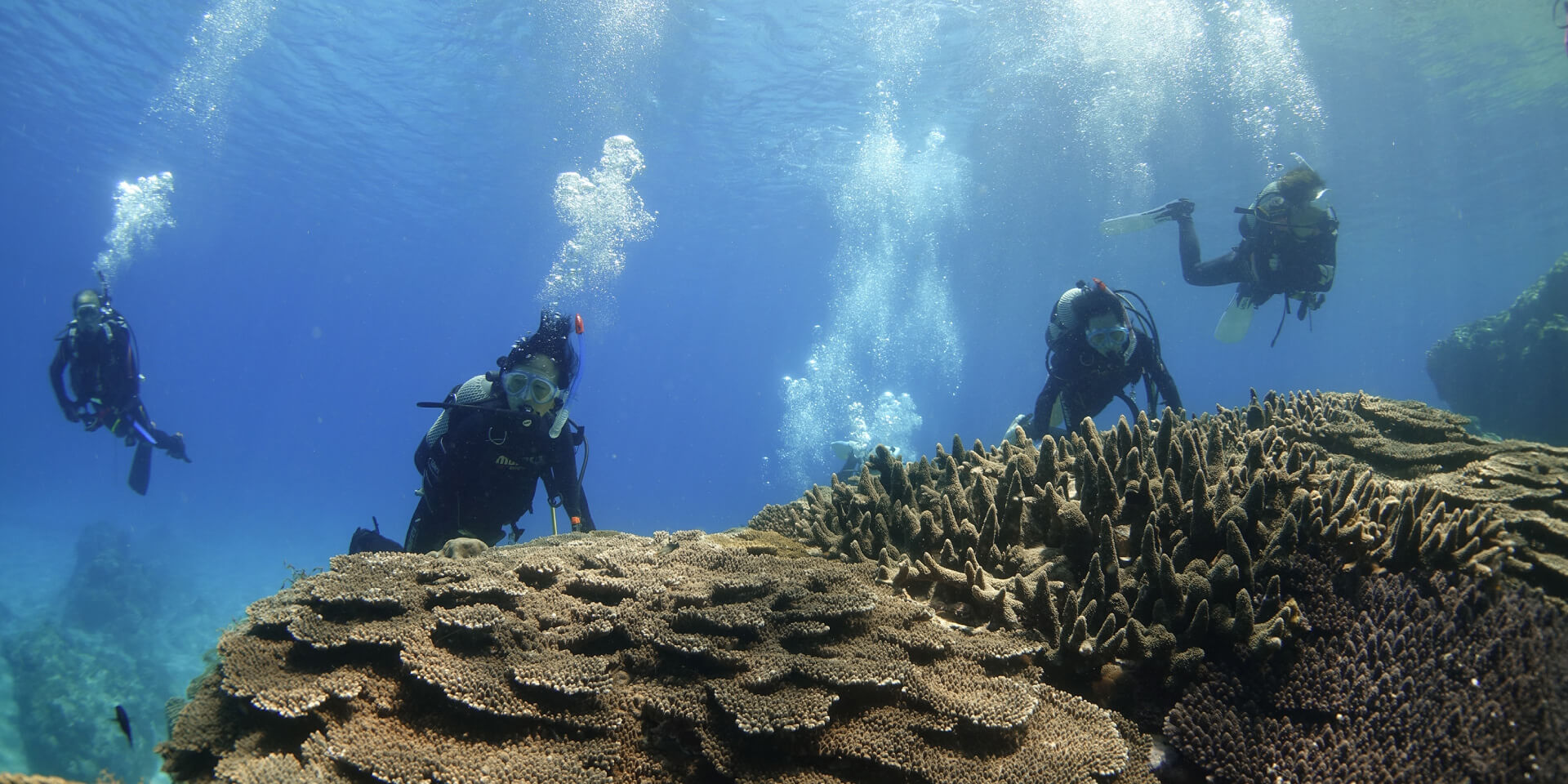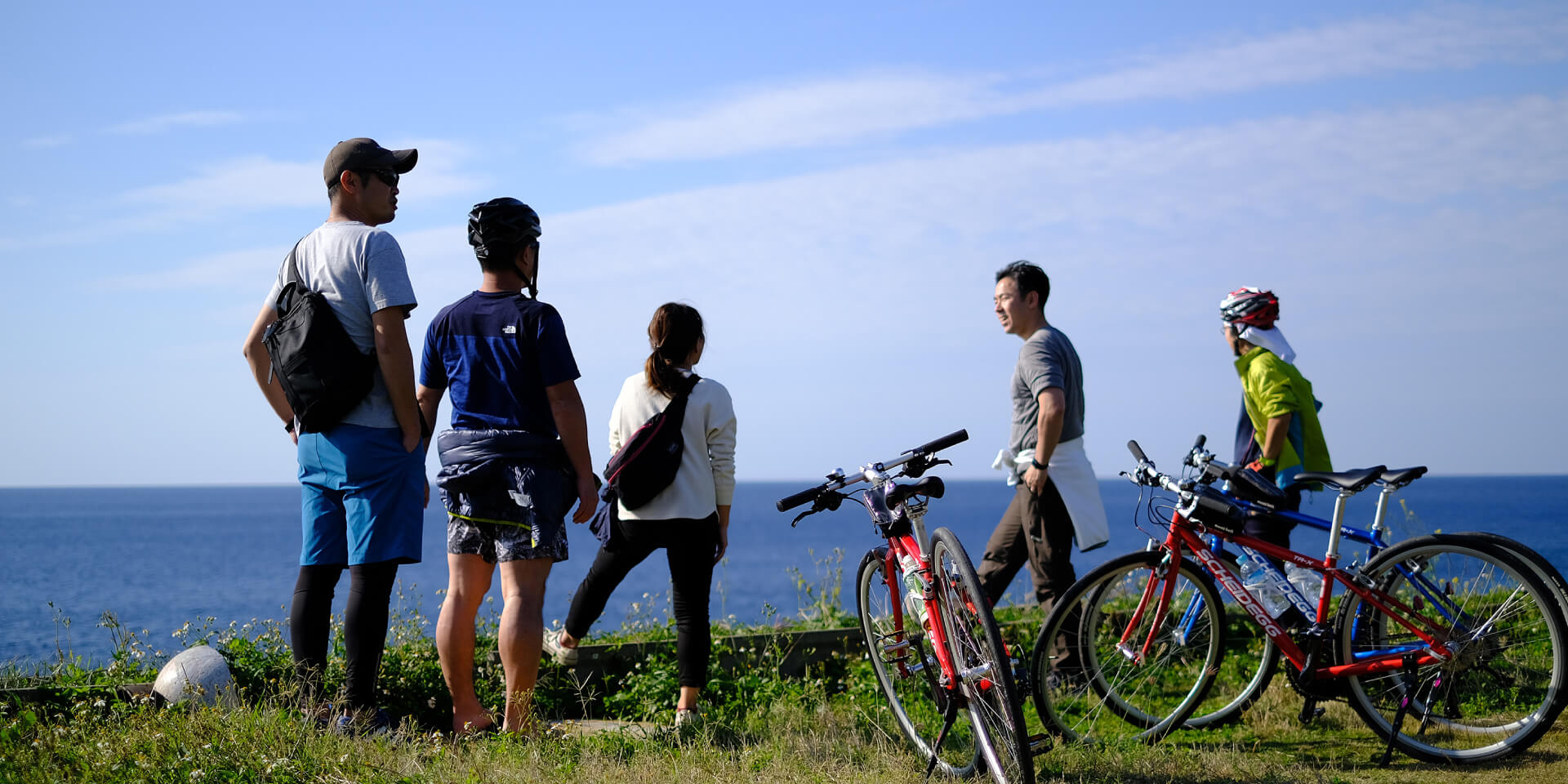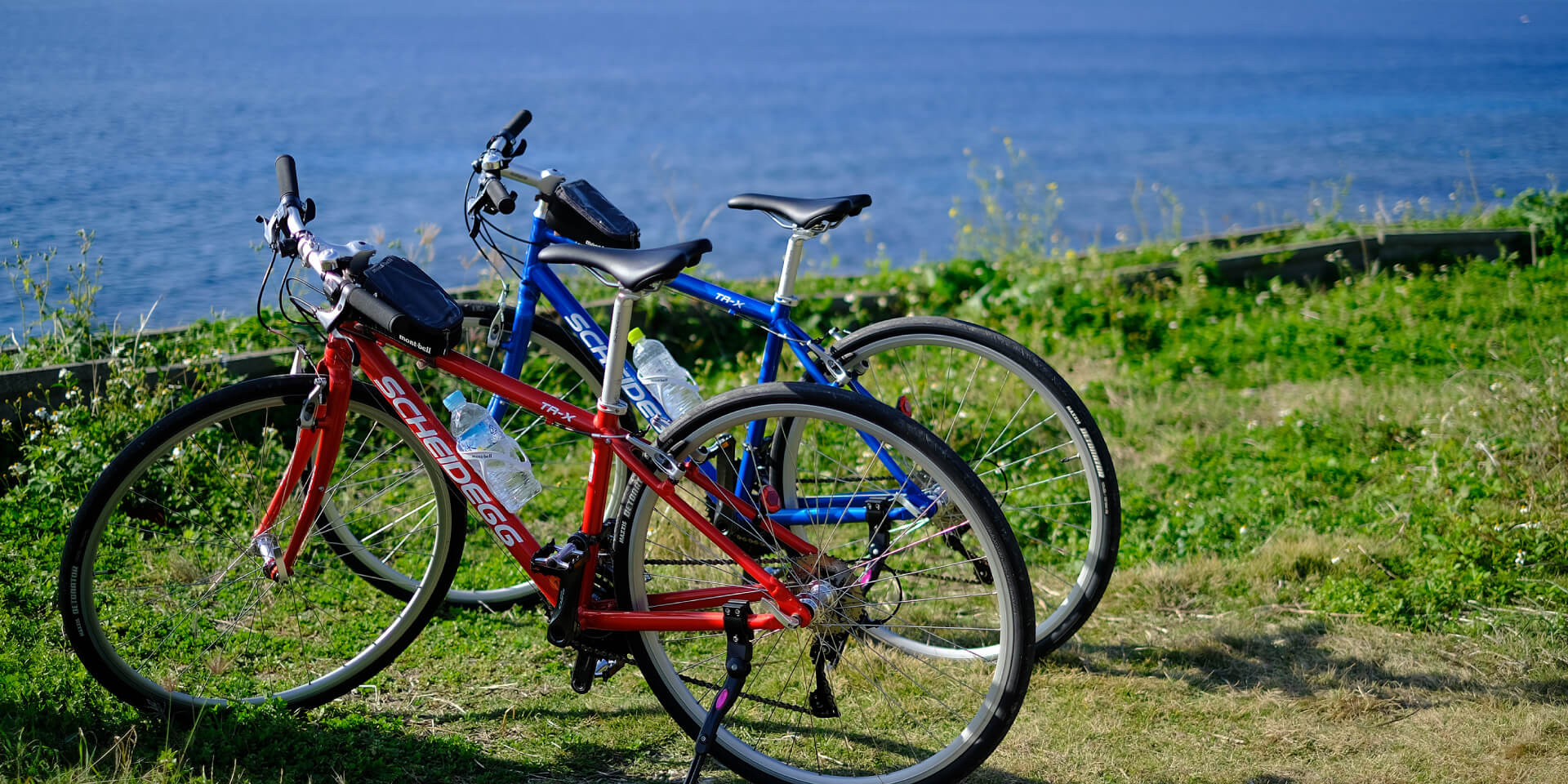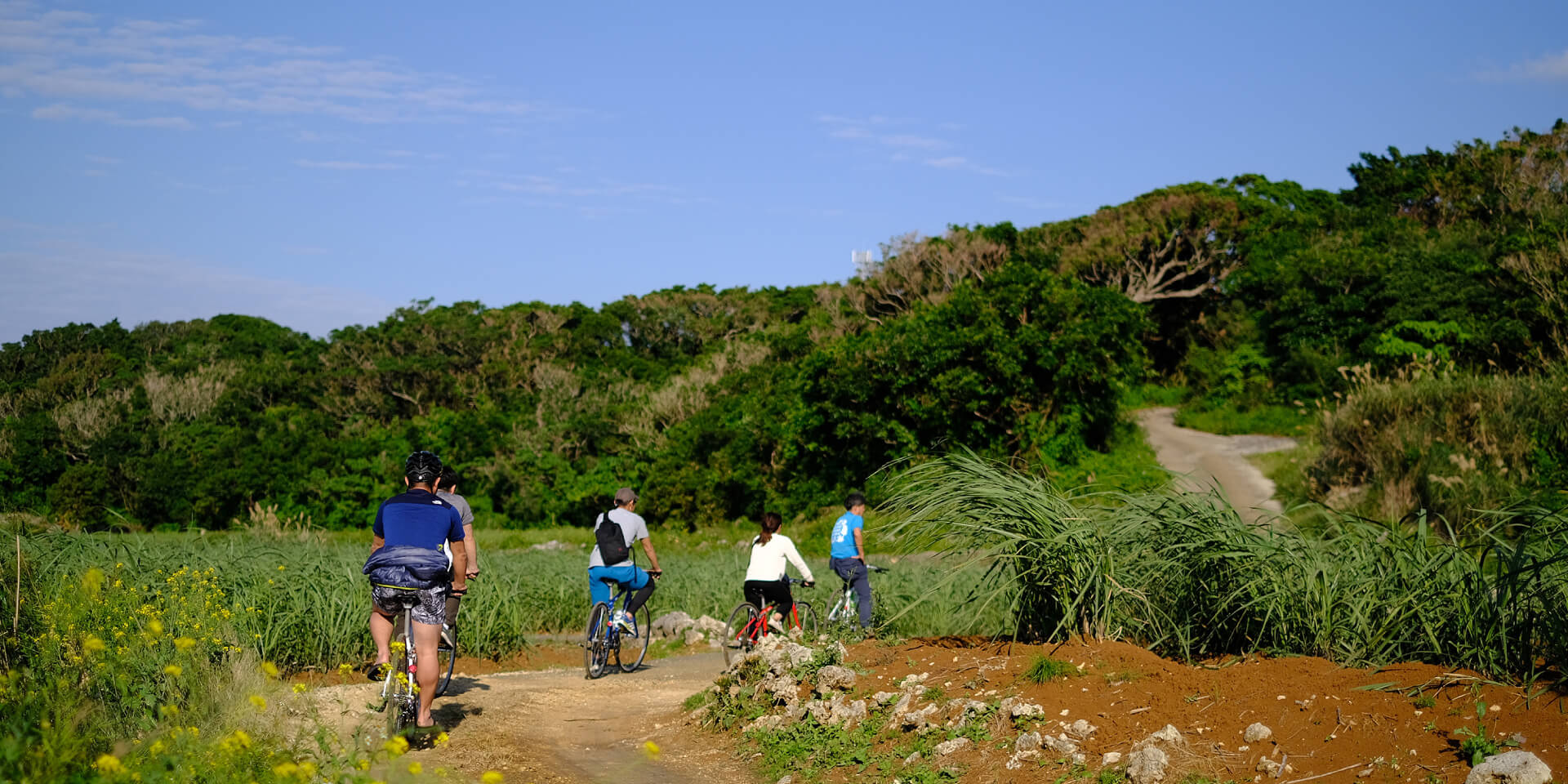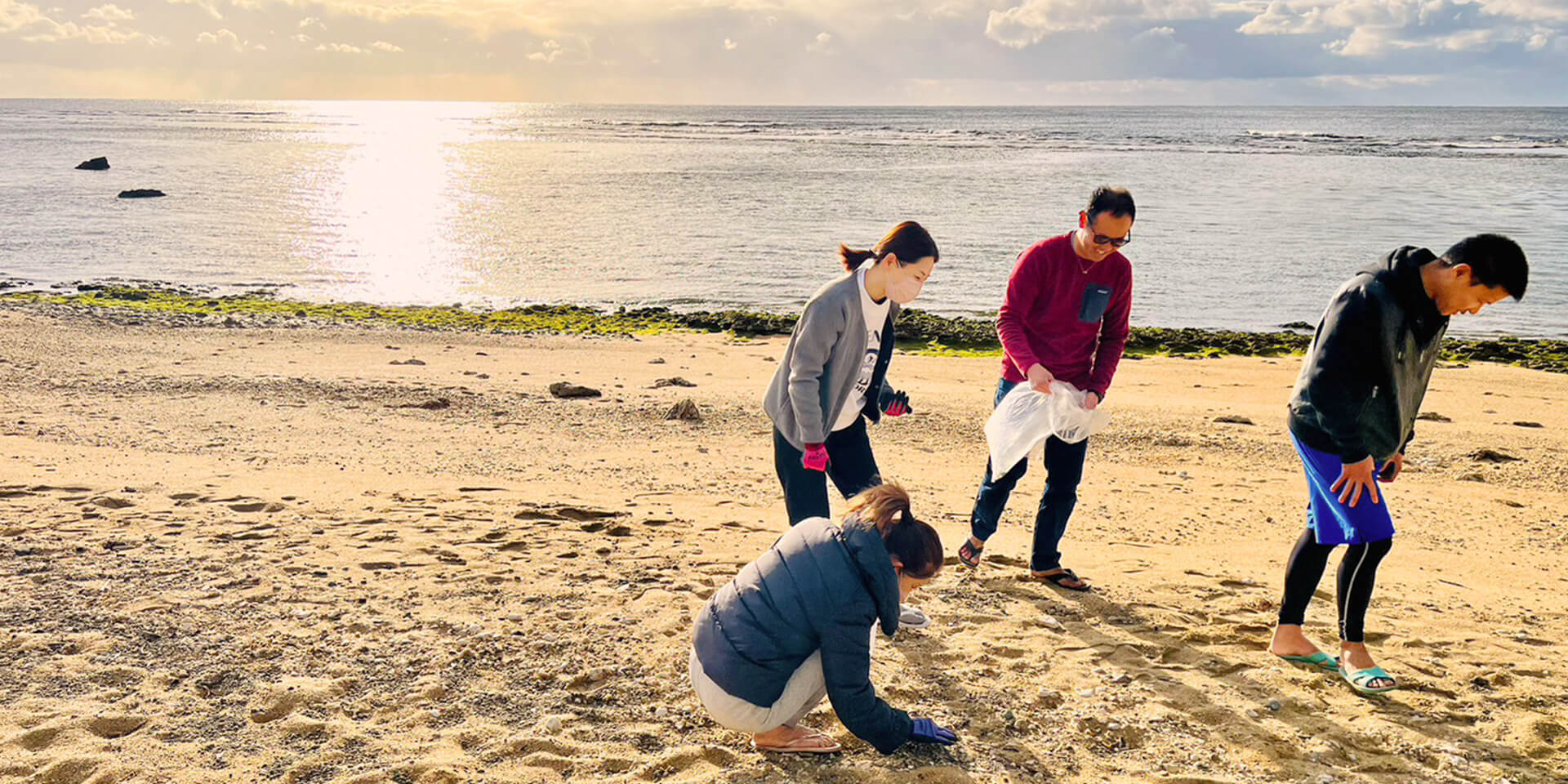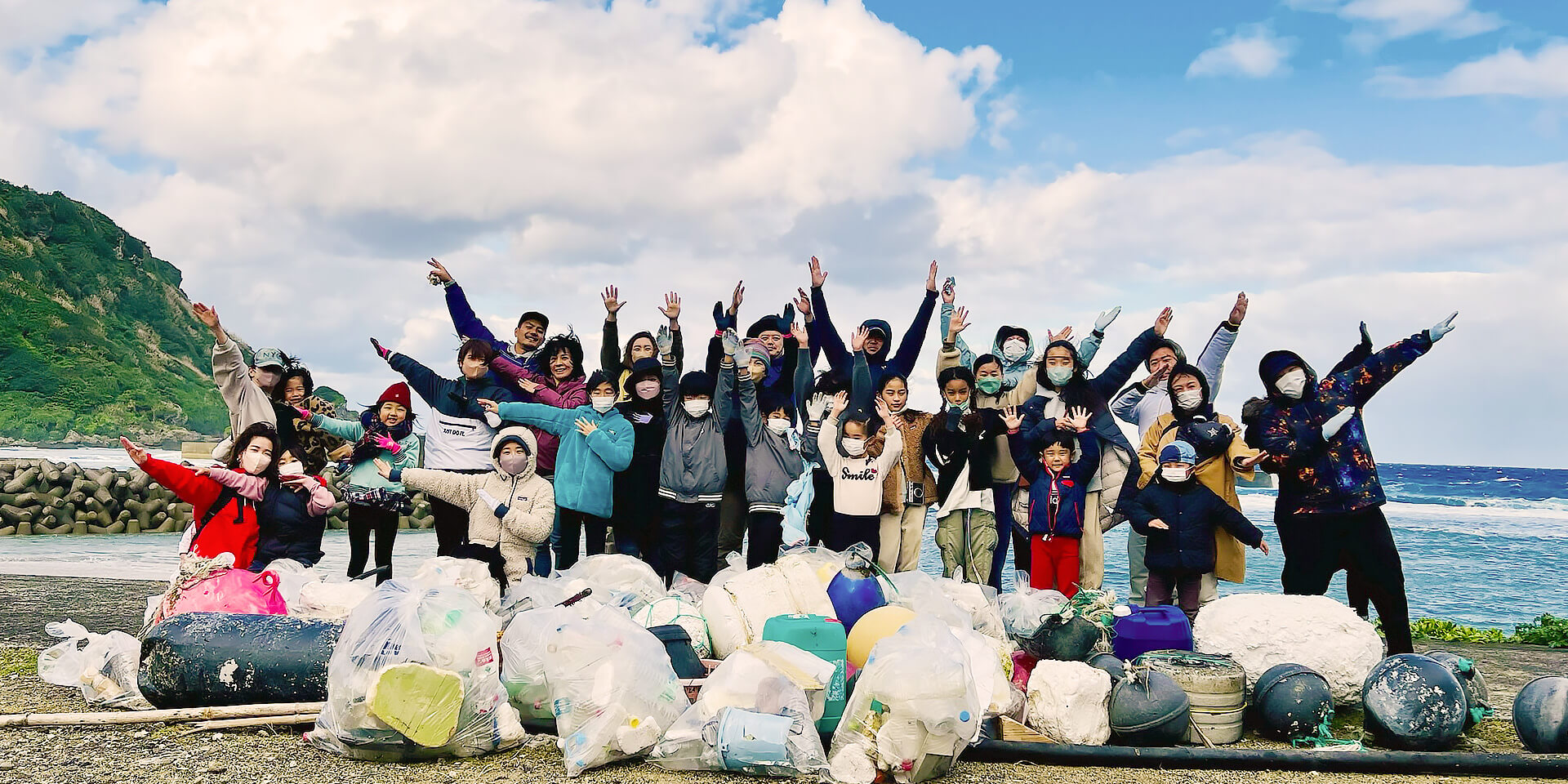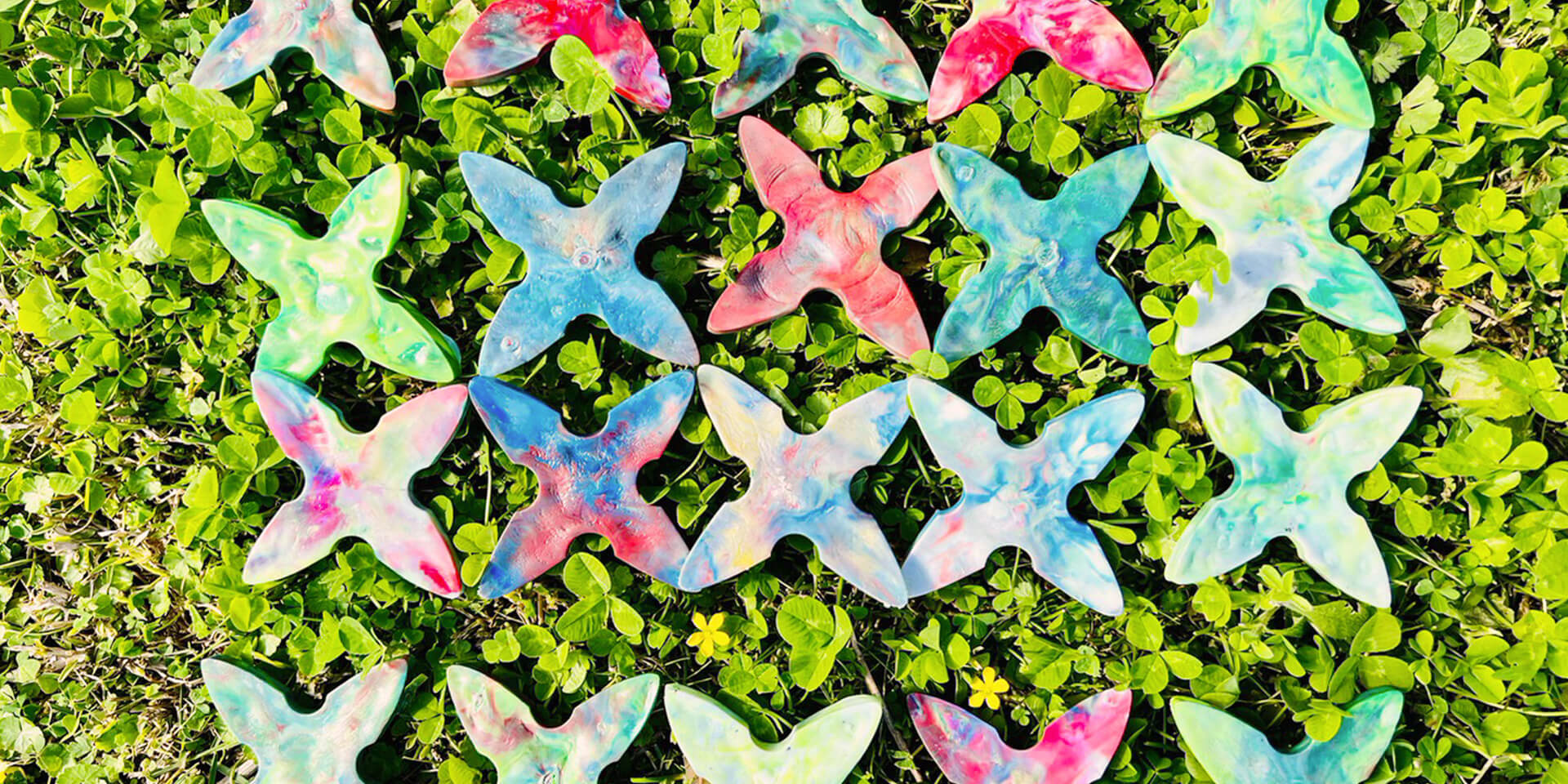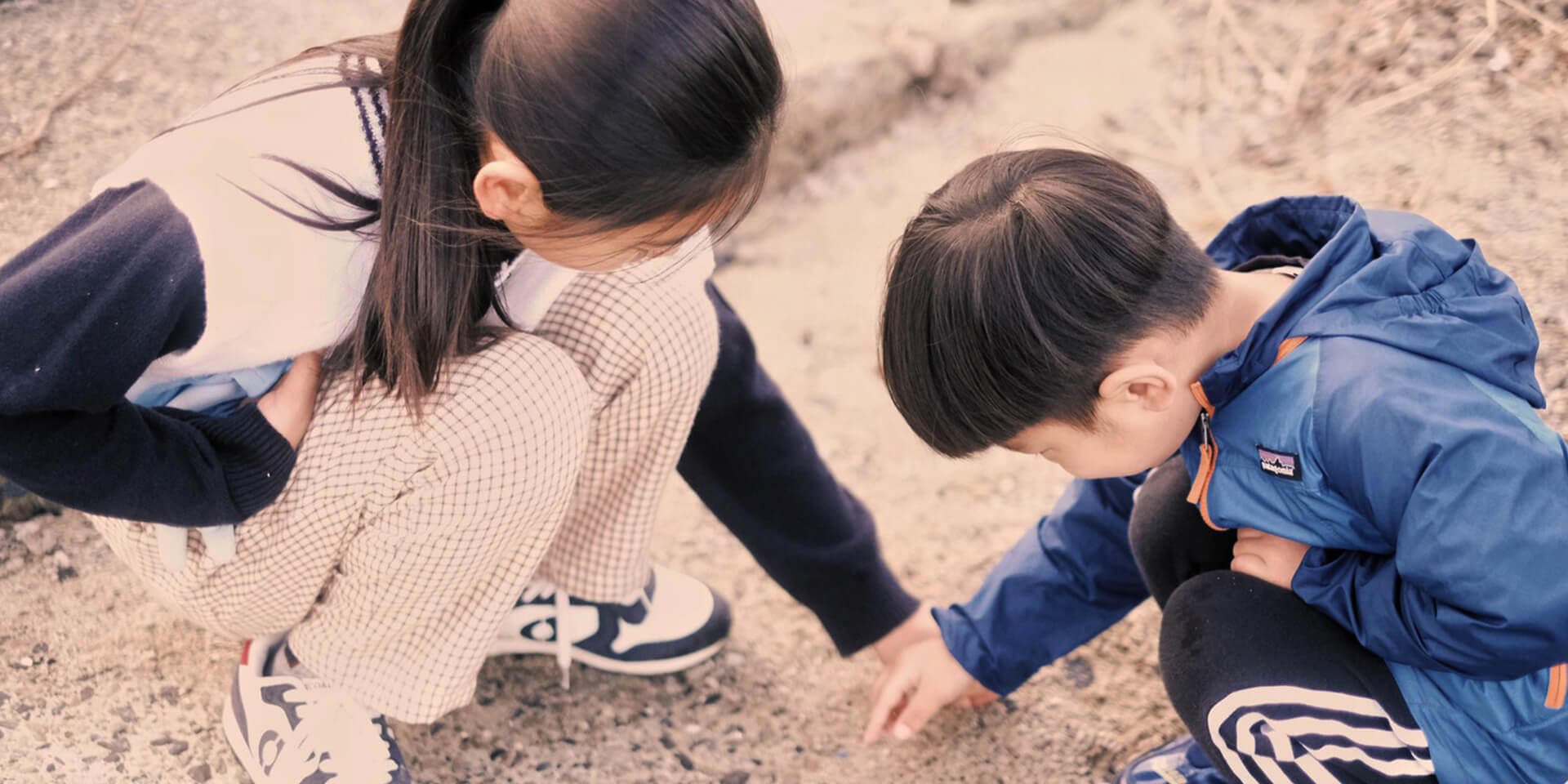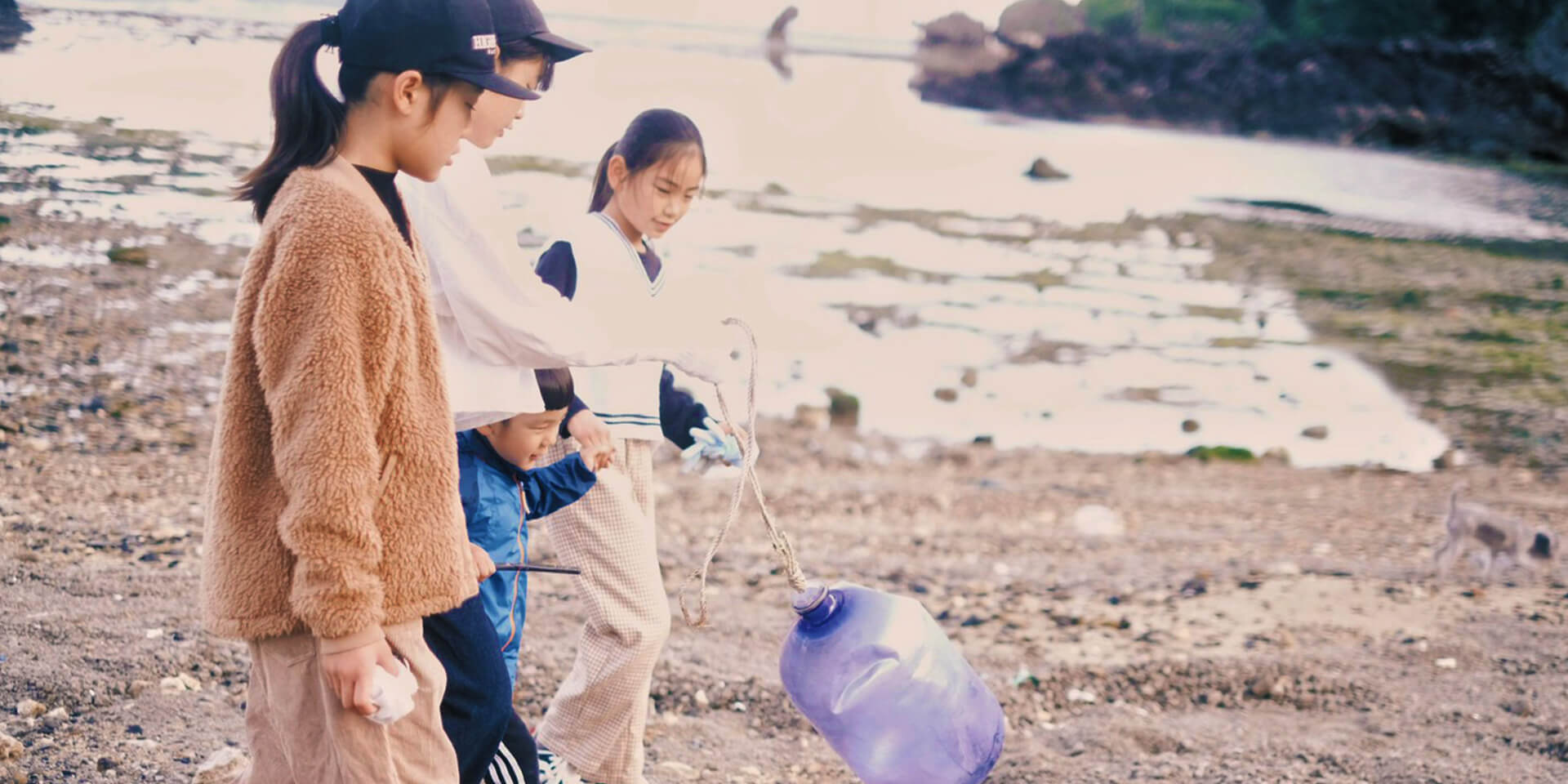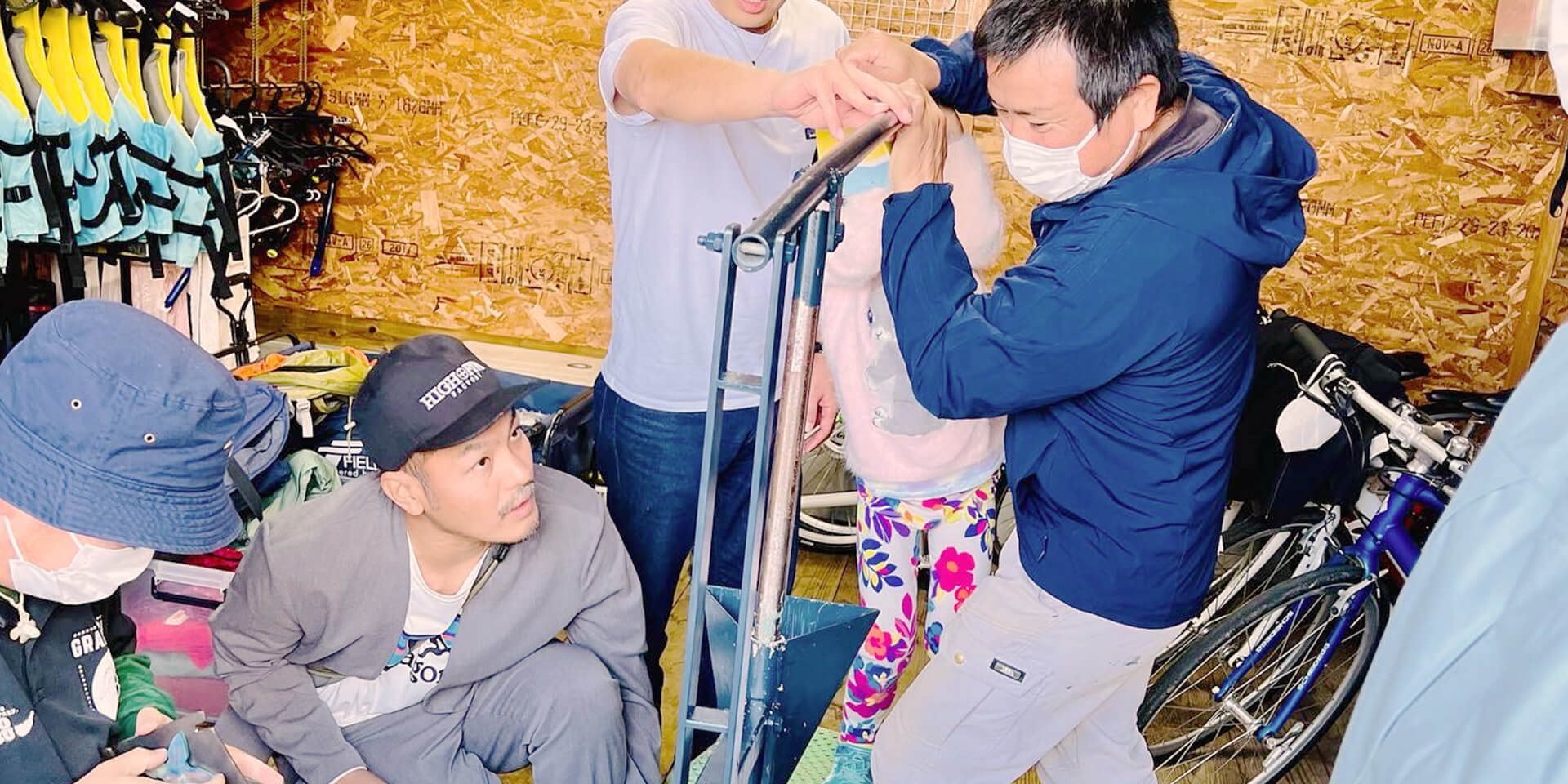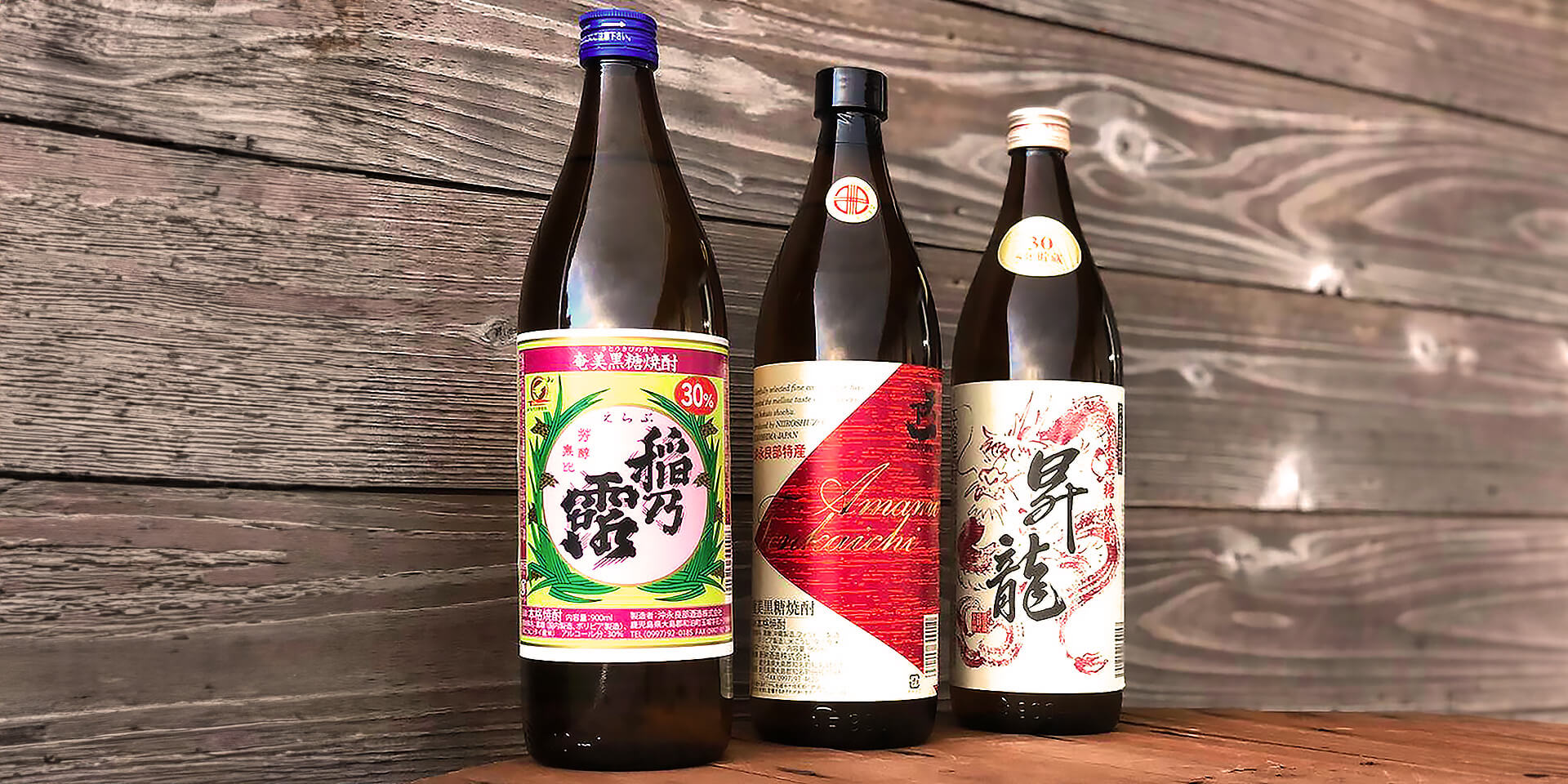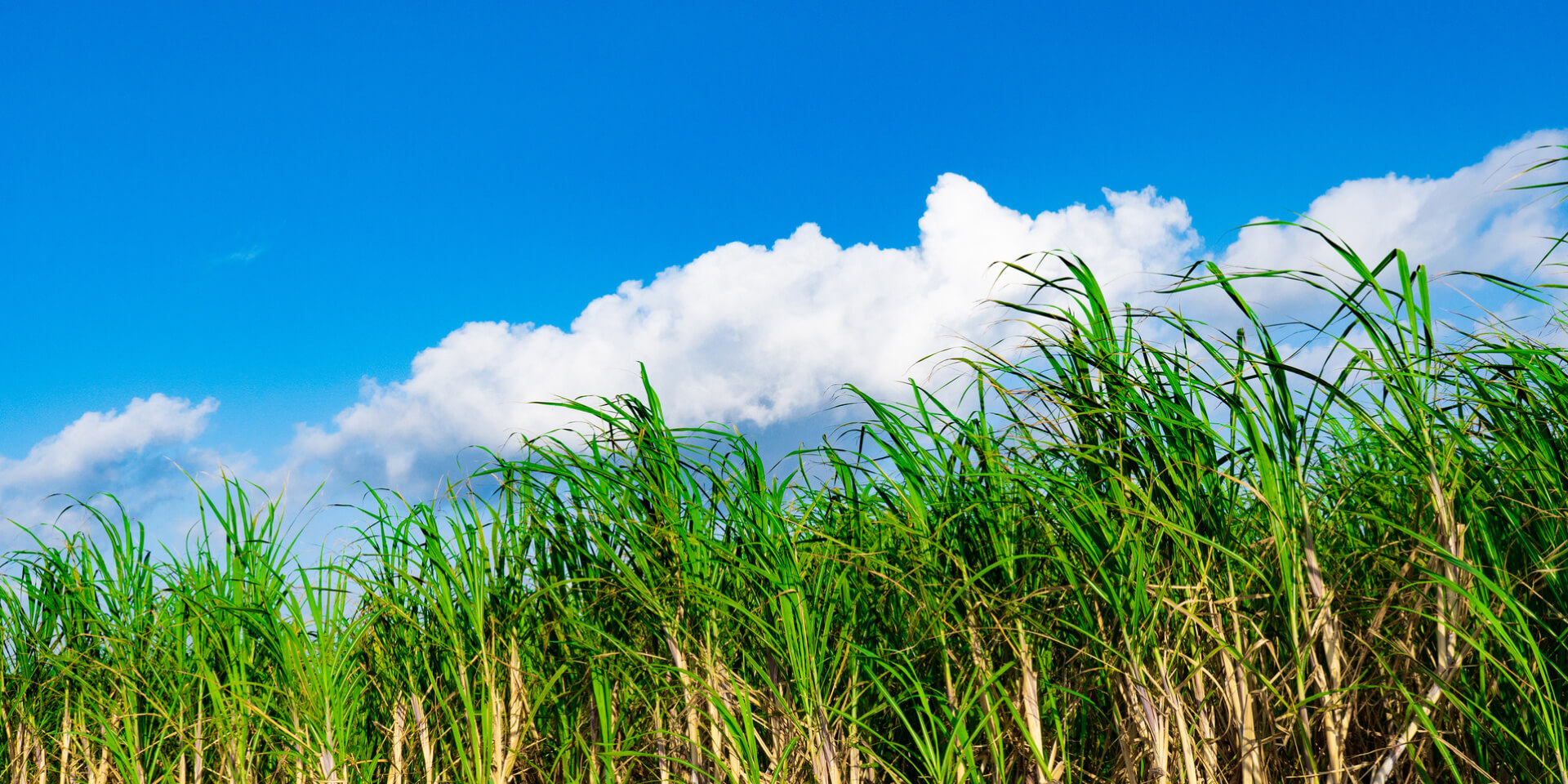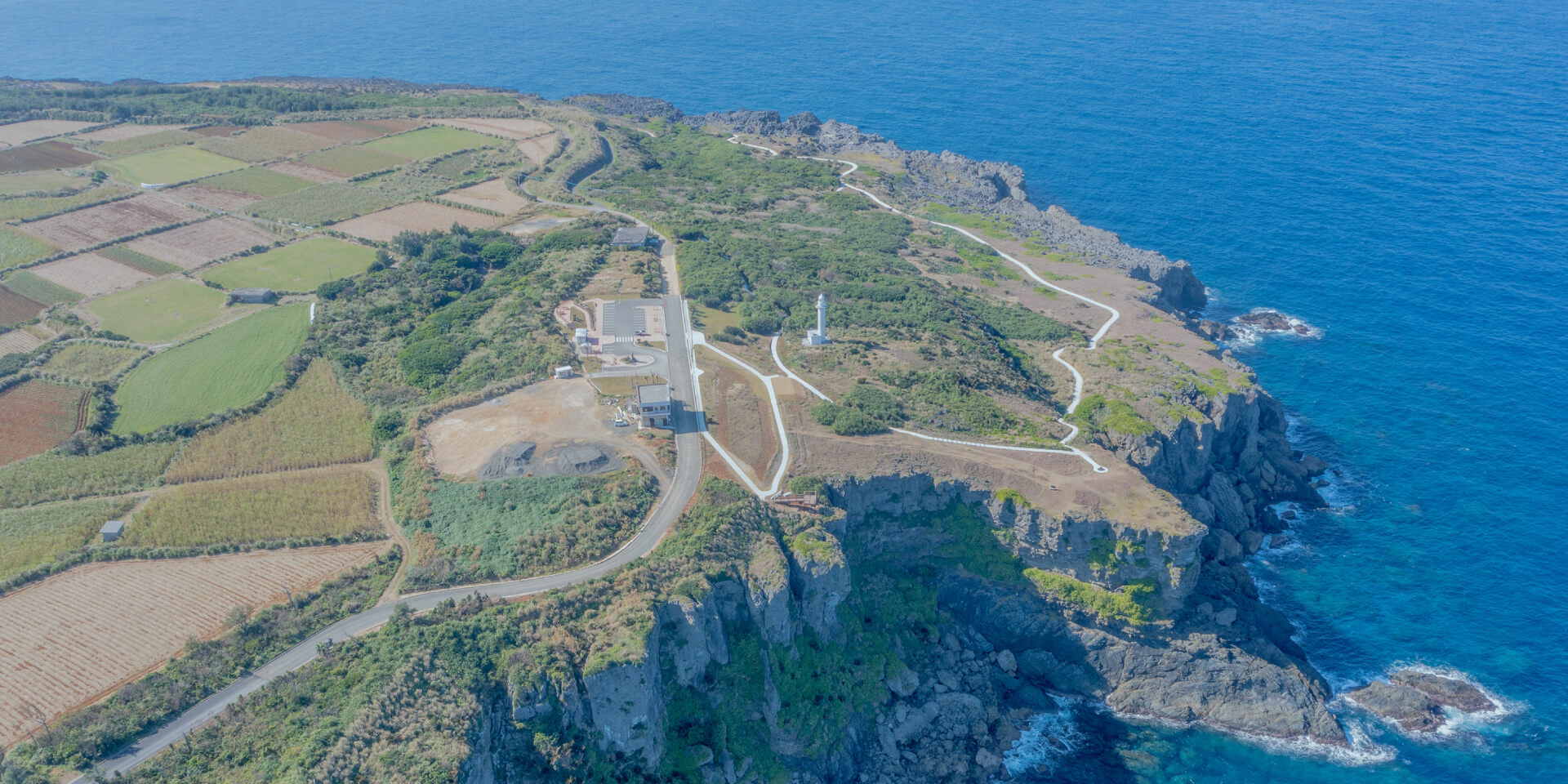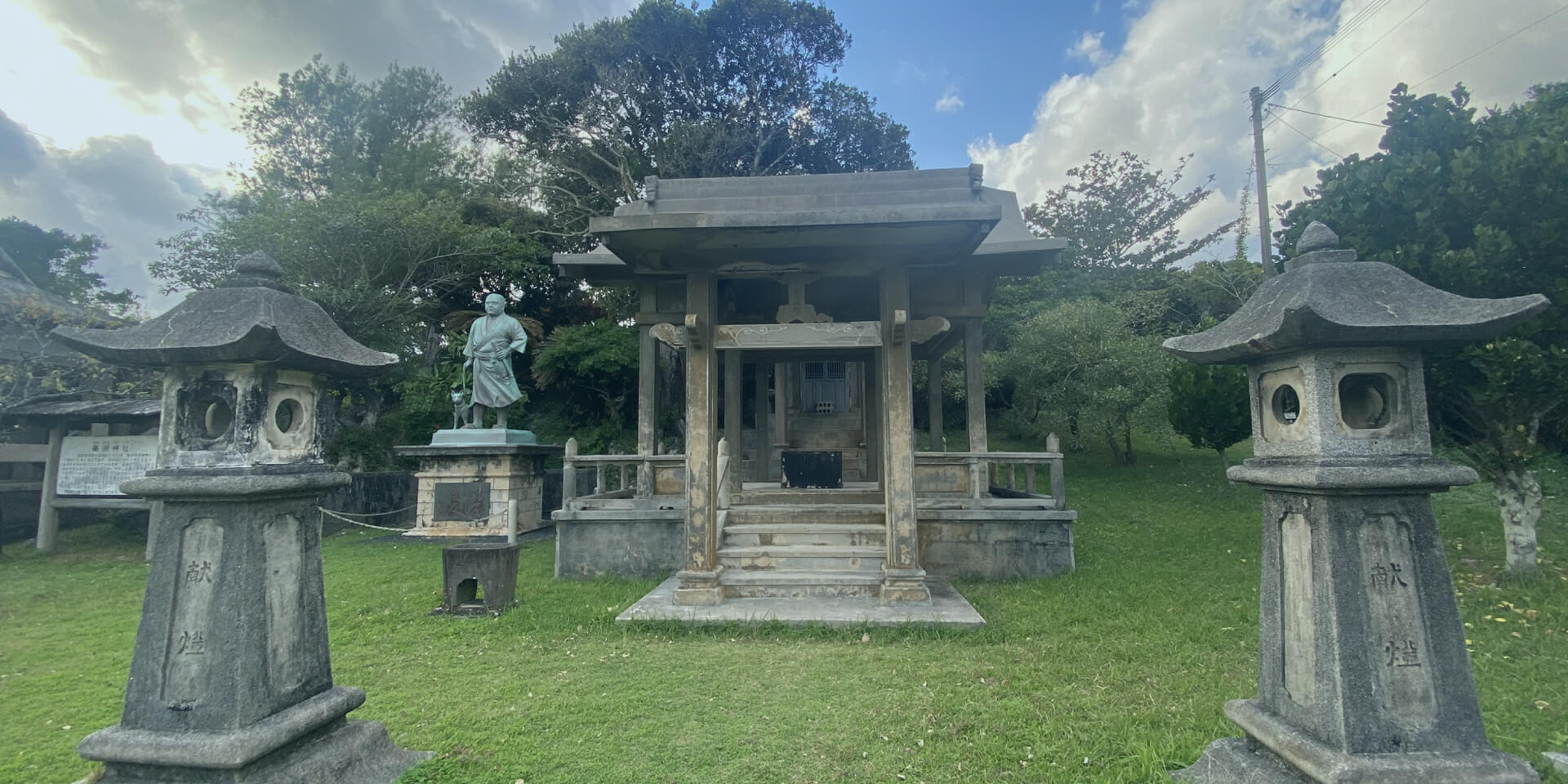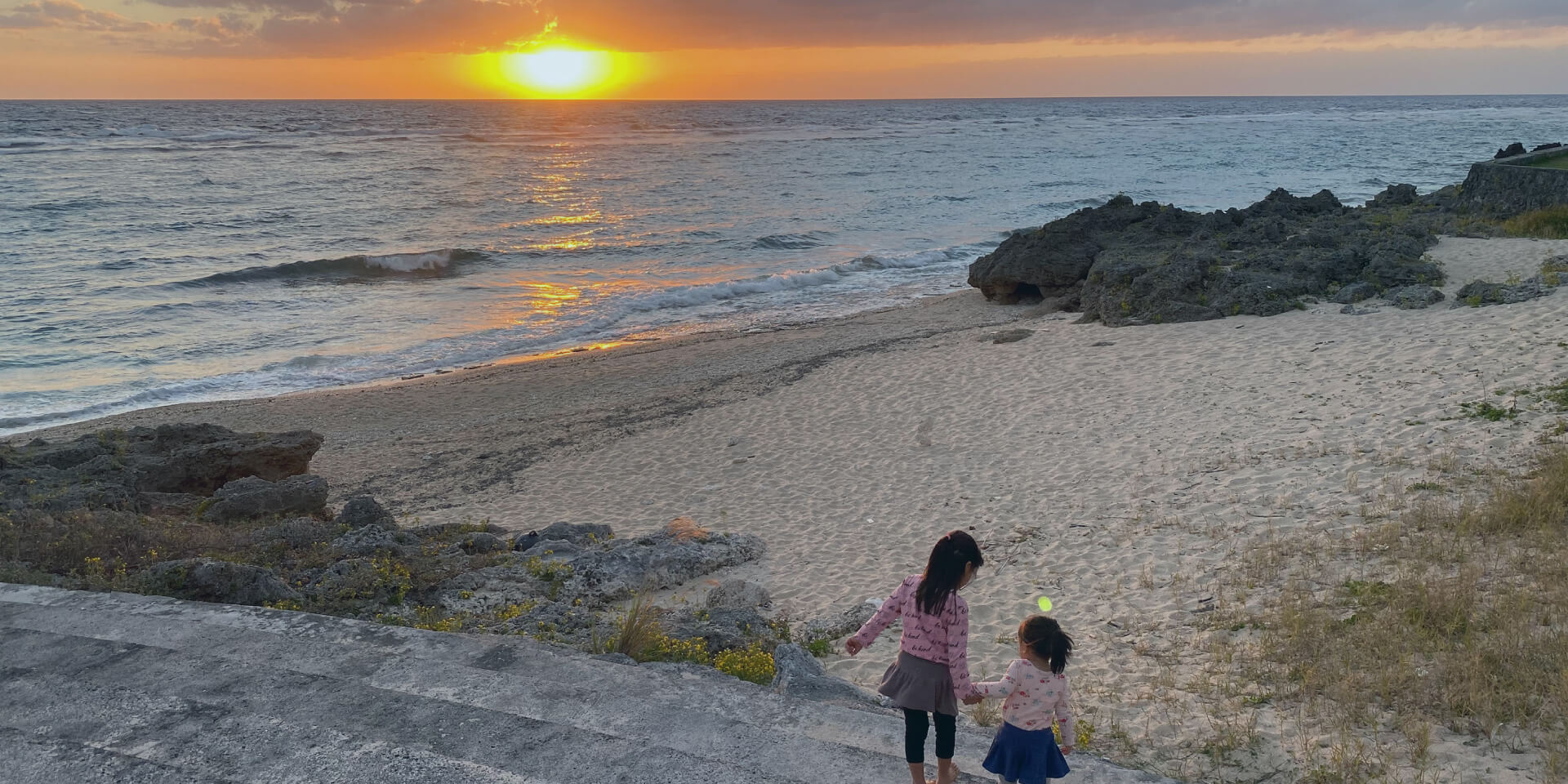Okinoerabu Island is very geologically distinct from most other Japanese islands.
Most of the island was originally formed by rising coral and is covered by limestone, and it is home to some of Japan’s largest limestone caves.
On Okinoerabu Island, you can do some light tropical cave exploration or some more involved caving with all the proper gear.
A wide range of options are available, from a visit to Shoryudo, which you can do in around 40 minutes in regular clothes and shoes, to proper caving tours lasting 2-5 hours with an instructor and full-on gear.
Okinoerabu Island is secretly a great diving destination, with average temperatures of 22°C and clear waters with visibility up to 20-40 m ahead.
It’s also not overrun with dive shops, so you can enjoy much of the sea almost entirely to yourself.
There’s also a good chance you’ll run into one of the many wild sea turtles that inhabit the area.
Forget your worries as you swim with your new sea turtle friends in the blissful emerald-green waters.
Okinoerabu Island only has two mountains, with the tallest being Oyama, at 240 meters high.
Otherwise, the island is mostly flat with great views of the sea, making it perfect for cycling.
Ride along paths sandwiched by red-clay fields, admire the sparkling ocean, take a dip in the sea, and have a chat with some of the locals you run into.
Unlike other islands in the area, there are no vipers here, so you can sit on the side of the road worry-free.
There are also guided cycling tours you can join.
On Okinoerabu Island, you can participate in an interactive world that allows you to experience environmentally friendly practices. Meet guides who are making a positive impact to protect the marine environment, and interact with them while cleaning the beach together. Afterwards, you can also enjoy an upcycling experience where plastic waste is transformed into goods with new value.
Okinoerabu Island is full of sugar cane fields, and some of this sugar cane is used to make brown sugar shochu, a special type of shochu liquor unique to the Amami Islands and a must-try for adult beverage aficionados.
Reservation & Access

Around 4 hours from Tokyo
Around 4 hours 30 minutes from Osaka
Around 1 hour from Okinawa
Access
Option 1
- TokyoorOsaka
- Next
- Kagoshima
- Next
- Okinoerabu Island
Around 4 hours from Tokyo (Haneda Airport)
Around 4 hours 30 minutes from Osaka (Itami Airport)
*Transfer times may differ by season
Option 2
- TokyoorOsaka
- Next
- Okinawa
- Next
- Okinoerabu Island
Around 5 hours from Tokyo (Haneda Airport)
Around 6 hours 40 minutes from Osaka (Itami Airport)
*Transfer times may differ by season
About
Okinoerabu Island
Geography & Climate
Okinoerabu Island is part of the Amami Islands, spread across an area south of Kyushu and northeast of Taiwan. It's 1 hour 15 minutes by plane from Kagoshima Airport or around 60 minutes from Okinawa's Naha Airport.
Okinoerabu Island is known for its warm climate, with an average temperature of 22°C, and the fact that it's one of the few islands in the region without vipers.
Visit Okinoerabu Island and enjoy clear blue waters and sky, year-round sunshine and a warm welcome from the down-to-earth locals.
History & Culture
Okinoerabu is well known for being the island that historical figure Saigo Takamori was exiled to. Saigo played a central role in bringing Japan's over-700-year-long samurai period to an end. Exiled and disheartened, Saigo was revitalized by life on the island and went on to play a key part in forging modern Japan.
After World War II, Okinoerabu Island was placed under U.S. administration, just like Okinawa. It remained under U.S. occupation until its return to Japan in 1953.
The island has been heavily influenced by Okinawan culture. Many of the traditional island folk songs do not feature the "re" and "ra" syllables found in standard Japanese, much like the folk songs sung in Okinawa.
Famous Flora
Okinoerabu Island's most famous flower is the Easter lily, known also as the Erabu lily, which blooms in late April to early May.
Riding the waves of free trade in the 1840s to 1870s, Japanese Easter lilies suddenly became hugely popular in Europe as an alternative to Madonna lilies, with many bulbs being exported from Japan.
Little did people in the West realize that most of these bulbs were actually Erabu lilies grown on Okinoerabu, a small island in far southern Kagoshima.
If you have lilies at home, they might just be descended from bulbs from Okinoerabu Island.
We use cookies on this site to enhance your user experience. If you continue to browse, you accept the use of cookies on our site. See our cookies policy for more information.


